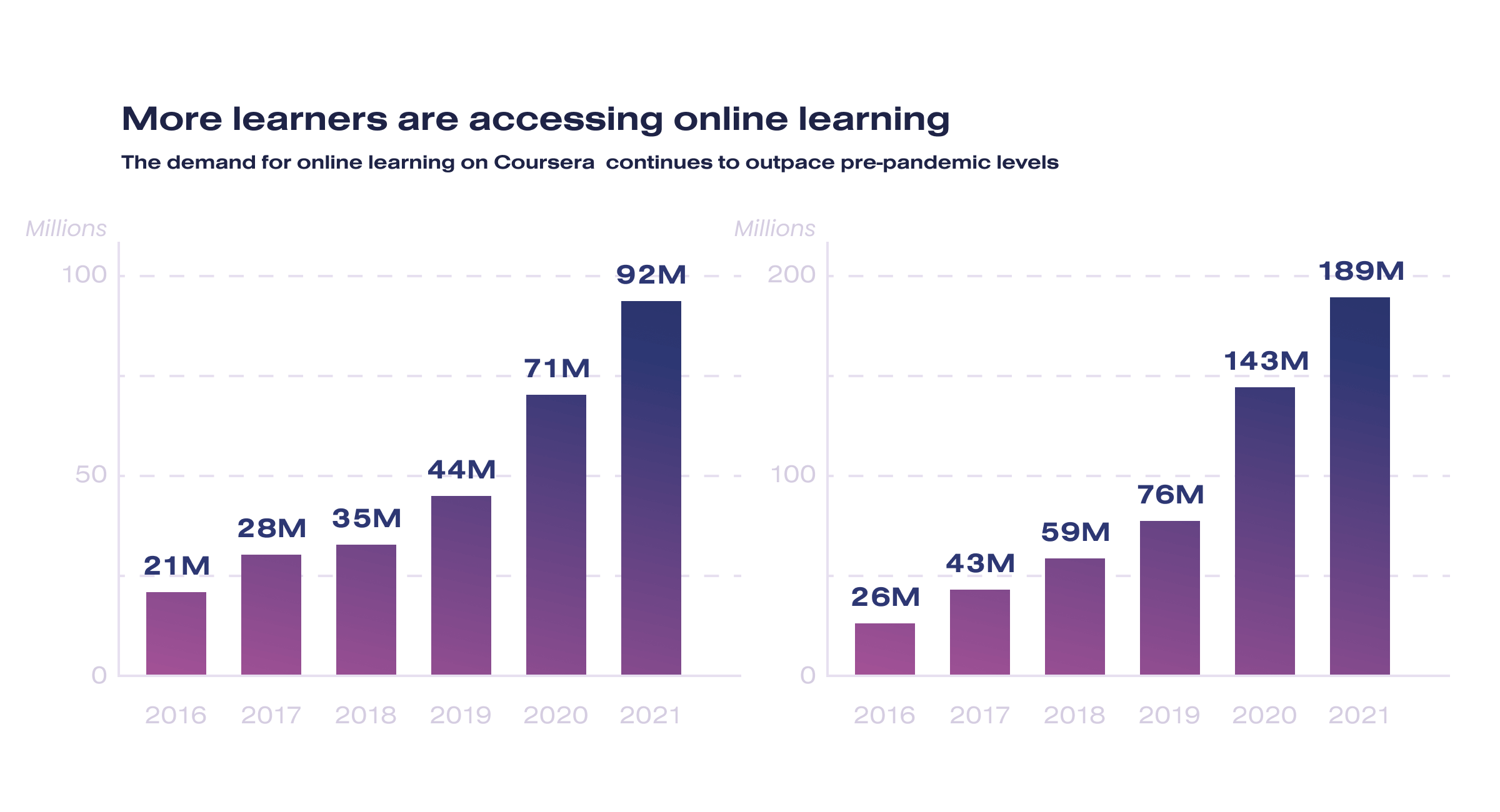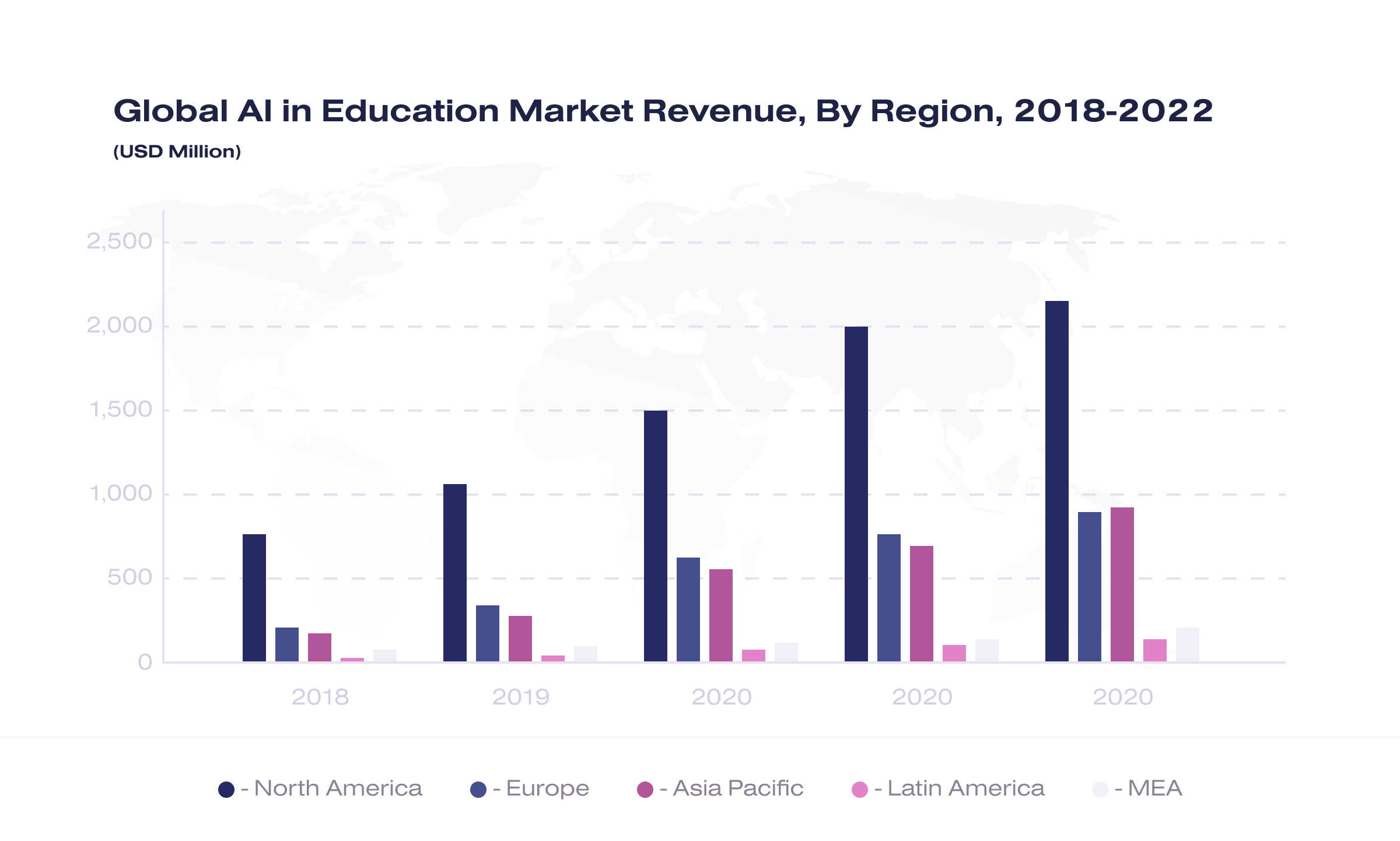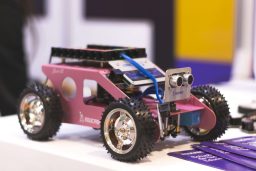ML is a promising technology for any industry. Verified Market Research’s 2021 report on AI in education describes machine learning, deep learning, and NLP as one of three pillars of this market. They were valued at $1.1 billion globally in 2020 and are expected to reach $21.52 billion by 2028. ML can greatly improve the effectiveness of learning, especially online.
This article discusses the education industry’s current state, how ML and AI can help the education industry, and the future of AI and ML in the EdTech industry.
Key points
Current state of the education industry

As part of the 2019 Beijing Consensus on Artificial Intelligence and Education, UNESCO has produced a paper examining the existing challenges and possible solutions through AI in education.
Today’s key ethical issue is “to ensure inclusive and equitable quality education and promote lifelong learning opportunities for all”. According to the official document, AI is meant to help solve the problem of accessibility and continuity in education.
Indeed, we’ve all heard about the difficulties of children in third-world countries who have trouble getting even a basic school education, let alone a college degree. Or about the obstacles that must be overcome to include children with disabilities. The lack of personalized learning in classrooms and the fact that students from large families lack attention from teachers causes them to fall behind.
How can ML and AI help the education industry?

While ML and AI offer tremendous potential, it’s important to note that they should be used as tools to augment human educators rather than replace them. The role of teachers in providing guidance, support, and fostering critical thinking skills remains vital for a comprehensive education.
Personalized learning
First, AI is designed to make education personalized. Think of those situations at school or university when you have already understood everything but must wait for others. Or, on the contrary, you agonizingly comprehend something that was surprisingly easy for others. In an ideal educational process, this should not happen.
Thinkster is a successful personalization tool. Users of the platform are tested, and then the AI provides a learning plan.

The student’s progress is tracked daily, and the curriculum adjusts to these intermediate results. A live expert works with the student every week, but this platform feature is not necessary for its success.
It is possible that soon the AI will even be able to recognize non-verbal cues like the expression on the student’s face when performing a task and, depending on the result, change the program’s difficulty level.
Another advantage of this personalization is that the division of students into achievers and underachievers should become a thing of the past because now everyone will follow their own program at their own pace!
AI-based teaching assistant

AI can free up a teacher’s precious time from routine and tedious tasks. For this purpose, the Georgia Institute of Technology scientists created the Jill Watson AI framework.
The personal assistant was initially developed to answer typical questions in a computer science degree program. Now its functionality is expanding, and it can already answer questions in an Introduction to Biology course.
As we can see from this example, AI is not replacing the teacher. It only replaces some of his/her functions, leaving more time and resources for humans to spend on individual work with students and sharing personal experiences with them.
The same scientists developed a VERA agent that assists students in the same biology course by helping them develop their environmental science projects.
A similar assistant exists for high school students. Brainly is an educational platform where students and teachers can ask questions and receive answers worldwide. The resource provides an opportunity to get help in solving tasks in various subjects, as well as communicate with other students and teachers and share knowledge and experience. Brainly has a separate section for parents to get information on how to help their children in their studies, choose the right school or university, and keep them motivated and interested in learning.
Finally, the universal assistant was offered by Cognii. The programmers have developed an educational platform that uses artificial intelligence to create personalized learning materials and assessments. It allows educators to assemble unique courses that adapt to the needs of each student.
Using neural networks and machine learning (ML) algorithms, Cognii analyzes student responses and provides feedback. It can also recognize natural language, allowing students to ask questions and get answers in their native languages.
Cognii has a data analysis feature that helps teachers track students’ progress and identify areas where they need additional help. The platform is available in various educational settings, including schools, colleges, and universities.
As you can see, all the monotonous work of teaching is largely taken over by AI (ML), leaving teachers with more and more room for creativity.
Adaptive learning
One of UNESCO’s requests (accessibility of education for all) can be successfully addressed by AI and ML. We are talking about the possibility of learning for people with health problems.
For example, there has long been software that converts text into speech for visually impaired students. And recently, an AI-based application that allows you to quickly translate speech into text appeared. This platform is called Dragon Anywhere.
Nuance Communications developed it, allowing users to create and edit documents using voice input on mobile devices. Dragon Anywhere is based on deep learning technology for high-fidelity speech recognition. It is also equipped with automatic text formatting features and even knows how to add graphics and images to documents. Currently, the platform only supports a few languages, including English, German, French, Italian, and Spanish.
This is just one example of platforms that help people with disabilities. By the way, Dragon Anywhere makes it much easier for people with Attention Deficit Hyperactivity Disorder (ADHD) to learn.
Administration of learning processes
AI and ML can assist the teacher not only in the training course but also in the process of its organization. It is logical to entrust it with all the administrative procedures.
For example, Factspan Analytics Inc. offers a solution for a whole range of tasks in training. The developers promise to simultaneously automate the following processes:
- Student adaptation (automated mailings, electronic forms, etc.)
- Assessment of students’ knowledge
- Tracking of class attendance
- Record keeping and auditing
- Various office tasks (certification of employees, payment for work, etc.)
Machine learning (ML) is a powerful tool in the education industry and is even used for fraud detection in such a complex niche as finance.
Personal tutor
Finally, AI can be the student’s personal learning assistant. Today, services that work with text are widespread. One of the most convenient is the Rytr project. It is an online platform for creating content based on artificial intelligence. This tool allows users to write text for websites, blogs, social networks, and other purposes.
A more advanced version of the personal tutor is Kadho’s educational robot for children, which can recognize a child’s speech. Capable of functioning offline, it allows the child to develop conversational skills and enrich his or her vocabulary while communicating. For constantly busy parents, this toy can be a real lifesaver.
Future of AI and ML in the EdTech Industry

How far AI and ML will be introduced into education is still unclear. Many are worried that AI will be able to replace teachers and completely dominate education. However, this is a very radical scenario.
China has already tried to introduce AI innovations permanently into the educational process. In one elementary school, students had to wear brain-wave trackers with sensors, working on the principle of EEG devices. Through these sensors, teachers can see whether students are concentrating on what is happening and whether they are distracted from their learning.
A YouTube video of this experiment has got almost 3 million views! However, many are alarmed by this scenario: people think this kind of student monitoring system is more reminiscent of a prison than a school.
Indeed, brain-wave trackers can fail. In addition, the fact that their measurements actually reflect a student’s concentration level is not yet proven. Many students complain that the brain-wave tracker presses on their heads and interferes with their studies rather than helps them.
But can introducing this technology be considered a reasonable use of AI for educational processes? Rather not. No scientist working on AI applications is interested in a scenario where machines take total control over everything that happens.
It is much more attractive to see AI integrated into education and working shoulder-to-shoulder with humans, taking over routine tasks and allowing teachers to concentrate on more important things. For example, in live communication with students, developing their creative thinking and teaching them teamwork. This application of AI can bring education to a qualitatively different level.
Conclusions
Any know-how does not carry a positive or negative message. The whole question is how one wants to apply it. Soon, AI and ML will become a serious help to many educators around the world.
Our team at Soloway Tech is a reputable and reliable partner for developing machine learning (ML) solutions in the education sector. Our domain expertise, track record, collaborative approach, ethical considerations, customized solutions, and focus on innovation make us a reliable partner for developing ML projects in education.
Our commitment to understanding the unique needs of educational institutions and our ability to deliver effective and ethical ML solutions position us as a trusted ally in advancing education through technology.




